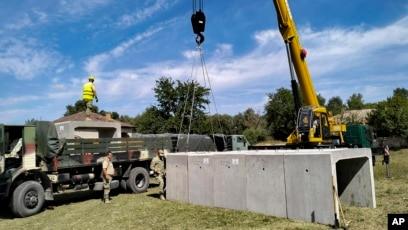Romania’s Stance on Russian Drones Amid Rising Tensions

Introduction
The ongoing conflict between Russia and Ukraine has sparked renewed concerns over the use of drones in warfare, significantly affecting the geopolitical landscape in Eastern Europe. Romania, as a NATO member and a neighbouring country to Ukraine, finds itself in a pivotal position regarding security and defence strategies related to Russian drone activity. This topic is not only crucial for military analysts but also relevant for Romanian citizens who are facing uncertainties in a changing region.
Current Developments
In recent months, Romania has seen an increase in discussions surrounding the potential threat posed by Russian drones, particularly those observed operating in Ukrainian airspace. Reports from the Romanian Ministry of Defence indicate heightened surveillance and defence measures along the shared border, as Romania seeks to ensure its national security against possible spill-over effects from the ongoing conflict.
Romania has also participated in NATO operations aimed at bolstering air policing and reinforcing the eastern flank of the alliance. These actions reflect a collective commitment to defend against any potential aggression stemming from Russian military operations in the region. Furthermore, Romania has ramped up its investment in modernising its military capabilities, including the integration of drone technology for reconnaissance and defence purposes.
Geopolitical Implications
The rising visibility of Russian drones has instigated a broader discussion within Romania about military preparedness and national security strategy. Experts warn that should Russia alter its aerial tactics and increase drone incursions, Romania must be adequately equipped not only to defend its airspace but also to respond to a humanitarian crisis potentially affecting thousands of Ukrainians fleeing conflict.
Additionally, as EU sanctions against Russia continue, the impact of these geopolitical tensions could extend beyond mere military concerns, potentially affecting trade and economic relations within the region. Romania’s response to these developments will be crucial in shaping its partnerships with other Eastern European nations and allies.
Conclusion
In conclusion, the situation surrounding Romanian responses to Russian drones represents a significant security issue that reflects broader military and geopolitical dynamics in Eastern Europe. As Romania seeks to navigate these challenges, it will be crucial for the country to maintain strong defensive measures while fostering regional cooperation. The outcomes of these efforts could have profound implications for both Romanian citizens and the stability of the region as a whole. Observers are encouraged to monitor ongoing developments as Romania continues to adapt its strategies in an increasingly complex security landscape.
